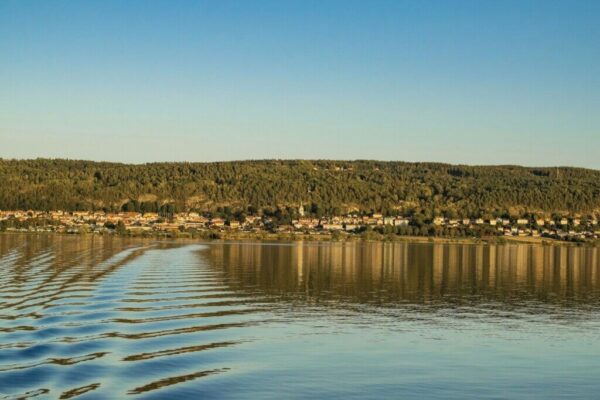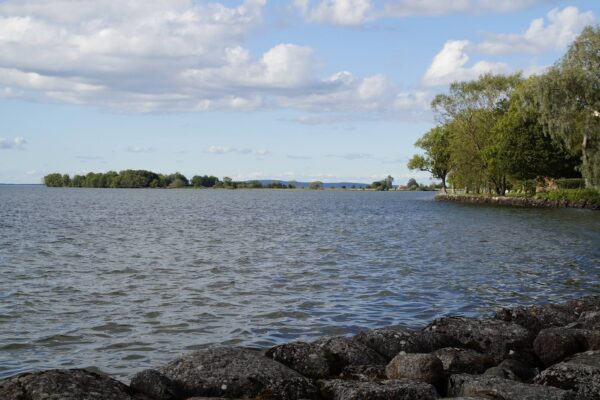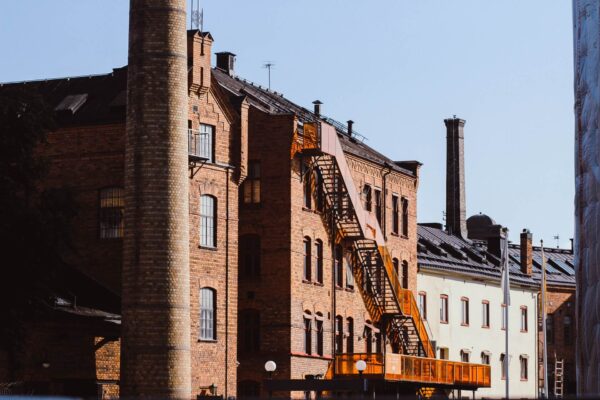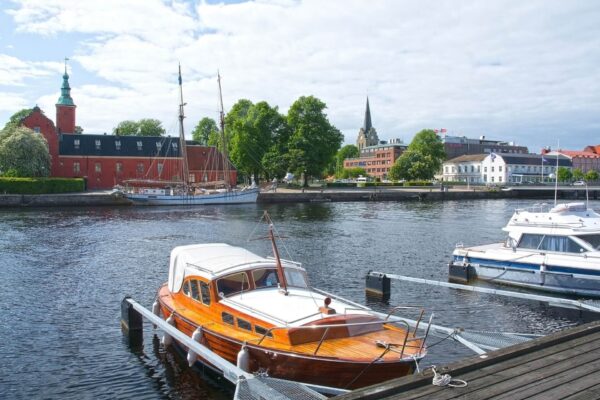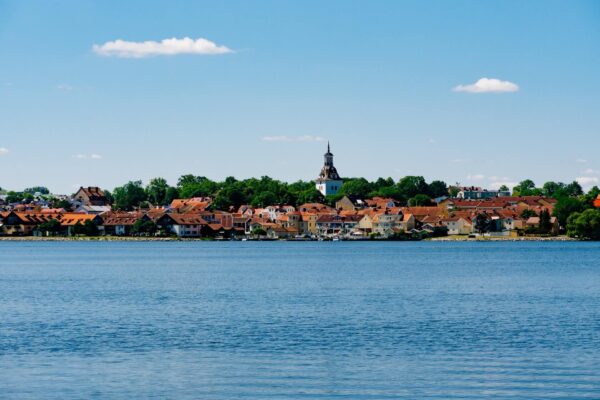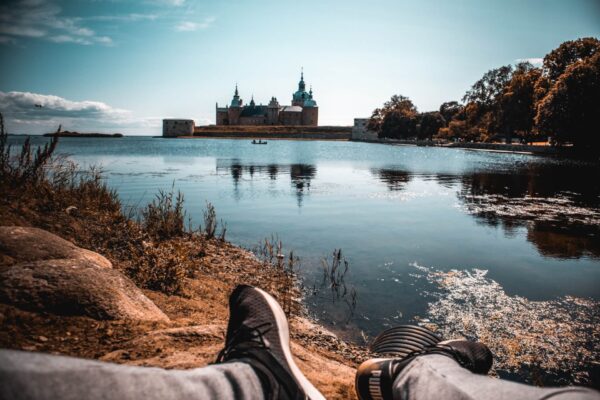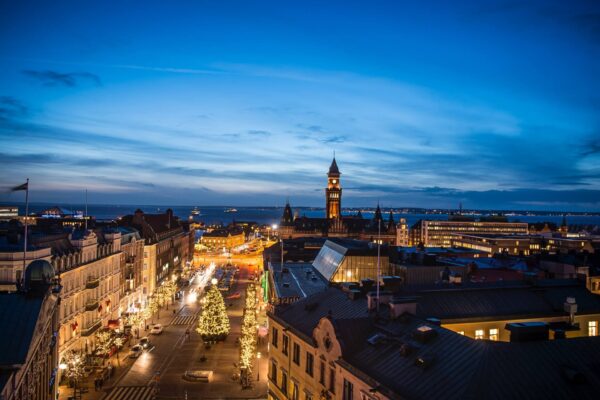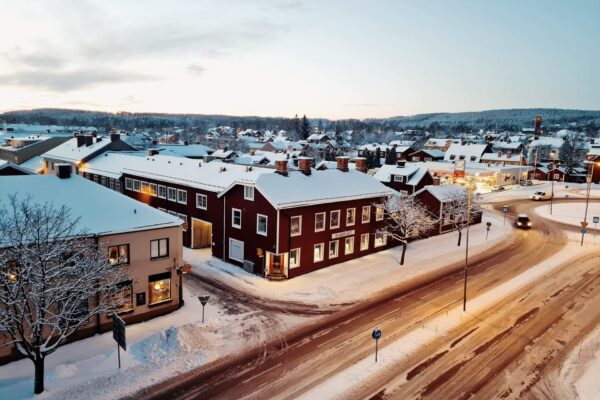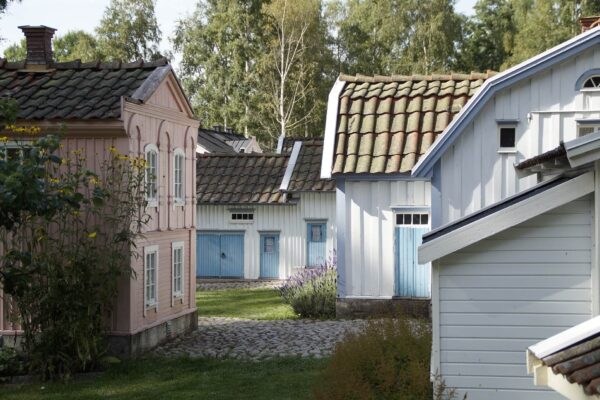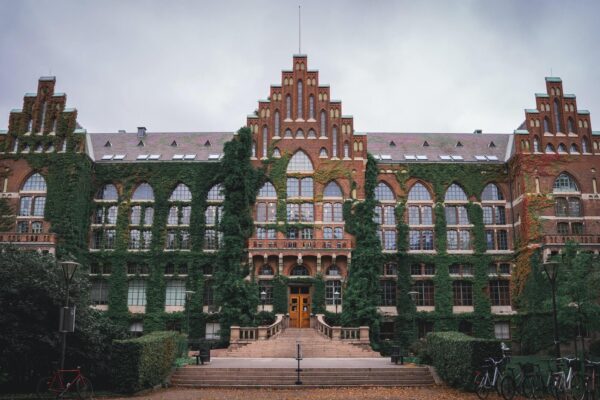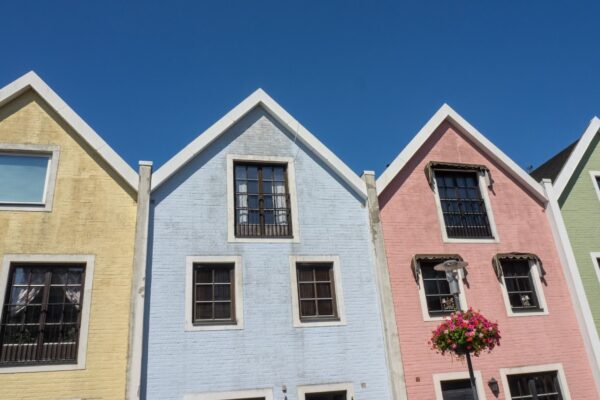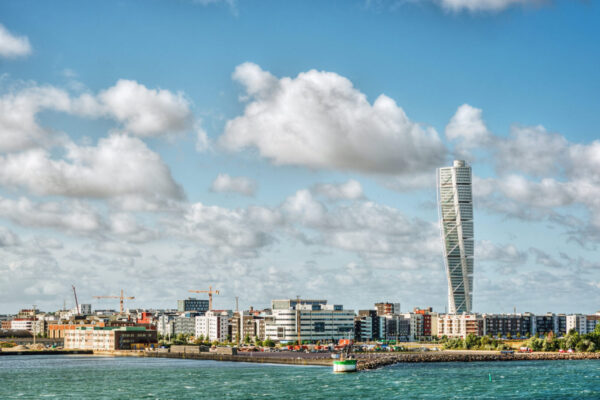The modern harbour metropolis of Gothenburg (Göteborg – pronounced “Jöteborje” in Swedish) combines maritime and natural flair with a flourishing art, culture and gastronomy scene. It was founded in 1621 by the former king on the Swedish west coast at the mouth of the Göta älv river. Time to get this beautiful city out of Stockholm’s shadow. Here you will find a travel guide for Gothenburg with all the important information.
In terms of population, Gothenburg is the second largest city in Sweden and the capital of the province of Västra Götalands län. The city area is divided into the three historic provinces of Västergötland, Bohuslän and Halland on the west coast of Sweden. Gothenburg is also known as a university and harbour city.
| Inhabitants | 572,800 |
|---|---|
| Area | 215,13 km² |
Gothenburg: sights and activities
A trip to Gothenburg is worthwhile for all fans of art, culture, good food and maritime flair. Those who have already enjoyed Stockholm will also feel at home in the somewhat smaller and quieter city, which is very close to nature but offers plenty of exciting attractions at the same time.
Gothenburg harbour
Gothenburg’s maritime history is most evident in Sweden’s largest harbour. Especially in the 18th century, the city was characterised by fishing and the harbour. Iron and timber goods were shipped from here. In the 20th century, it became the largest export harbour in Northern Europe.

The red and white tower there is known as the “lipstick” and offers an excellent view over the city. When the weather is nice, you can simply stroll along the quayside and watch the ships and boats. Further, it is worth taking a tour of the historic ships moored in the harbour and visiting the “Maritiman” adventure museum, as there are around 15 museum ships to visit here.
Gothenburg archipelago

The Gothenburg archipelago (skärgård) lies off the coast of the city and comprises many small, rocky archipelago islands. Some of them are inhabited. More precisely, it is divided into the southern and northern archipelago. However, only the southern archipelago is a district of Gothenburg, while the northern archipelago belongs to Öckerö. As a holidaymaker, the best way to get to the islands is by ferry from Saltholmen (terminus of the tram).
Especially in summer, it is worth strolling through the cosy villages with their small falun red houses or visiting a local restaurant. If you want, you can even spend the night here. Incidentally, a day ticket is ideal for a day of island hopping. The ferries are part of Gothenburg’s public transport system.
Liseberg
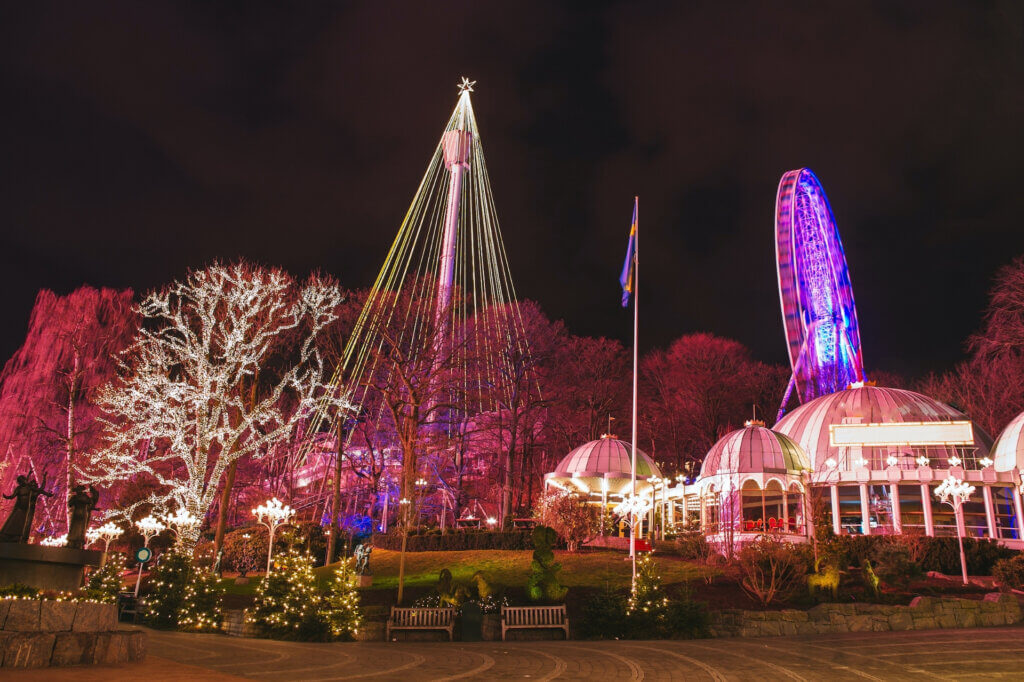
Liseberg is the largest amusement park in Northern Europe, which is located in the centre of the city and was opened in 1923. Here you will not only find various roller coasters, wild water rides and drop towers, but also attractions for the little ones.
In summer, the “Live Liseberg” concert series takes place, with international stars performing. In winter, on the other hand, the park is transformed into a wonderful Christmas market with an open-air ice rink.
Paddan boat tour
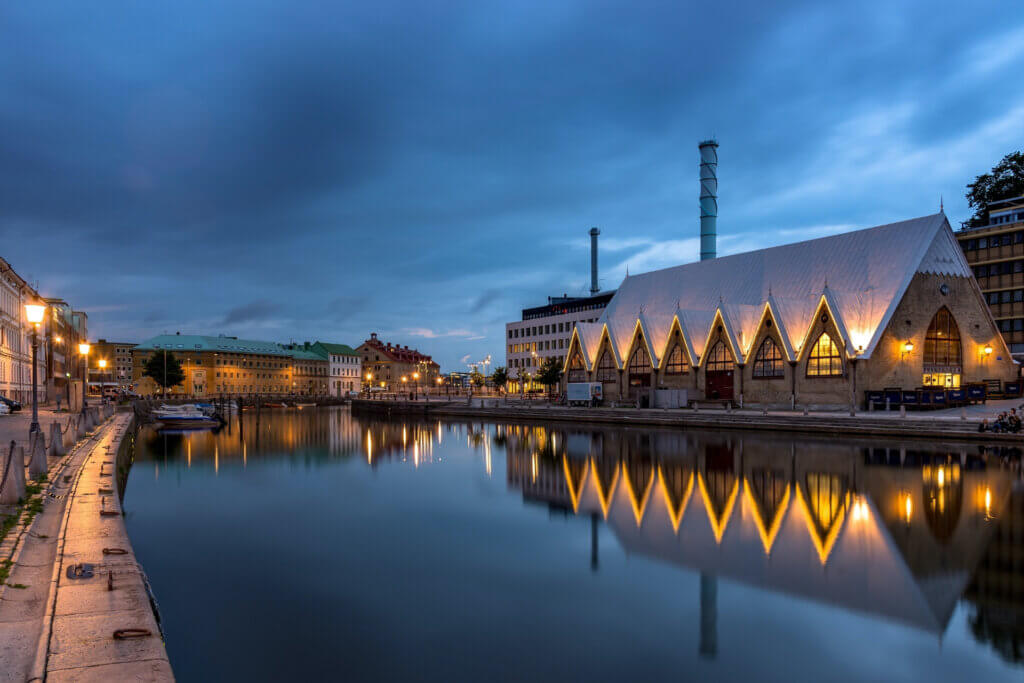
Of course, Gothenburg can also be explored from the water. A tour on one of the small, open “paddan” boats takes you through the city’s canals and canals, past bridges and sights. The boat routes are somewhat reminiscent of the Netherlands, which is due to the fact that many Dutch people immigrated to Gothenburg in the 17th century. The boats depart from Kungsportsplatsen every hour and travel through the city centre for around 50 minutes.
Haga district

Haga is particularly popular for its cosy cafés (be sure to stop for a fika here!) and vintage shops. It is one of Gothenburg’s oldest neighbourhoods, which can still be seen today in the wooden and brick buildings. From the Risåsberget hill, you have a beautiful view over Haga and the rest of the city. The Skansen Kronan fortress tower is also located here.
Parks and gardens

If you are looking for some relaxation away from the hustle and bustle of the city centre, you will find it in Gothenburg: Whether it’s the Botaniska Trädgård (Botanical Garden), which is one of the largest in Europe, the Trädgårdsföreningen park, a 19th century city centre oasis, or the Slottsskogen (“Castle Forest”) park, which has restaurants, a petting zoo and playgrounds.
You can even spot moose and seals here. The city’s extensive green spaces are particularly suitable for families with small children.
Sauna in the free harbour
Another place worth seeing in Gothenburg is the futuristic sauna in the free harbour (Bastun i Frihamnen). Since 2015, it has been located in the old industrial harbour, which is currently being transformed into a jubilee park to mark the city’s 400th birthday. The sauna is largely made from recycled materials. Entry to the sauna and the public swimming pool is free of charge.
Travelling to Gothenburg
By ferry
If you would like to travel to Sweden by car, you can take a direct ferry to Gothenburg, either from Kiel, Germany or Fredrikshavn in Denmark.
By plane
You can also fly to Gothenburg from the UK, as the city has its own airport. Direct flights are offered from London. With a stopover you can also departure from Manchester, Birmingham, Bristol and Edinburgh. You could combine your journey with a city trip to Stockholm, for example.
Weather in Gothenburg
The climate in Gothenburg is relatively mild, as it is located in the south of Sweden. The best time to visit is in summer, between June and September, as the average temperature here is a pleasant 15 to 20 degrees – perfect for a city trip. However, it can also rain from time to time. The coldest month is January.
Cruises and canal trips
Canal cruise with the M/S Juno: Stockholm – Gothenburg
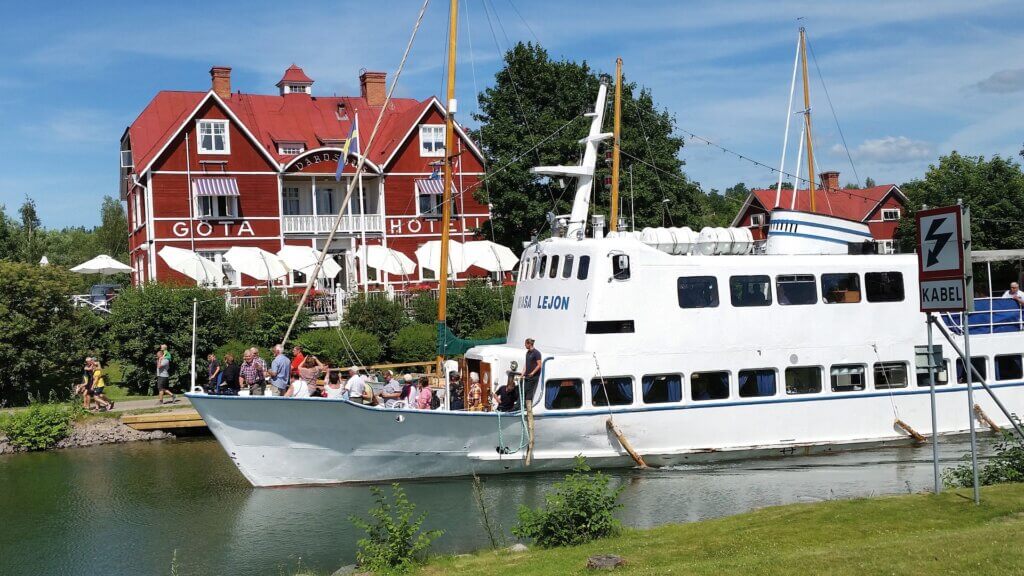
For all Sweden fans, we recommend a canal cruise on the M/S Juno on the Göta Canal. The 4-day cruise takes you from Stockholm to Gothenburg or vice versa. What makes it special: Built in 1874, the M/S Juno is the world’s oldest ship with overnight accommodation and is a listed building. Accordingly, the 29 cabins have their very own charm.
Full board and a ship’s guide are provided on board. You will pass various sights and natural spectacles, including the Viking town of Birka and the fortress of Karlsborg.
